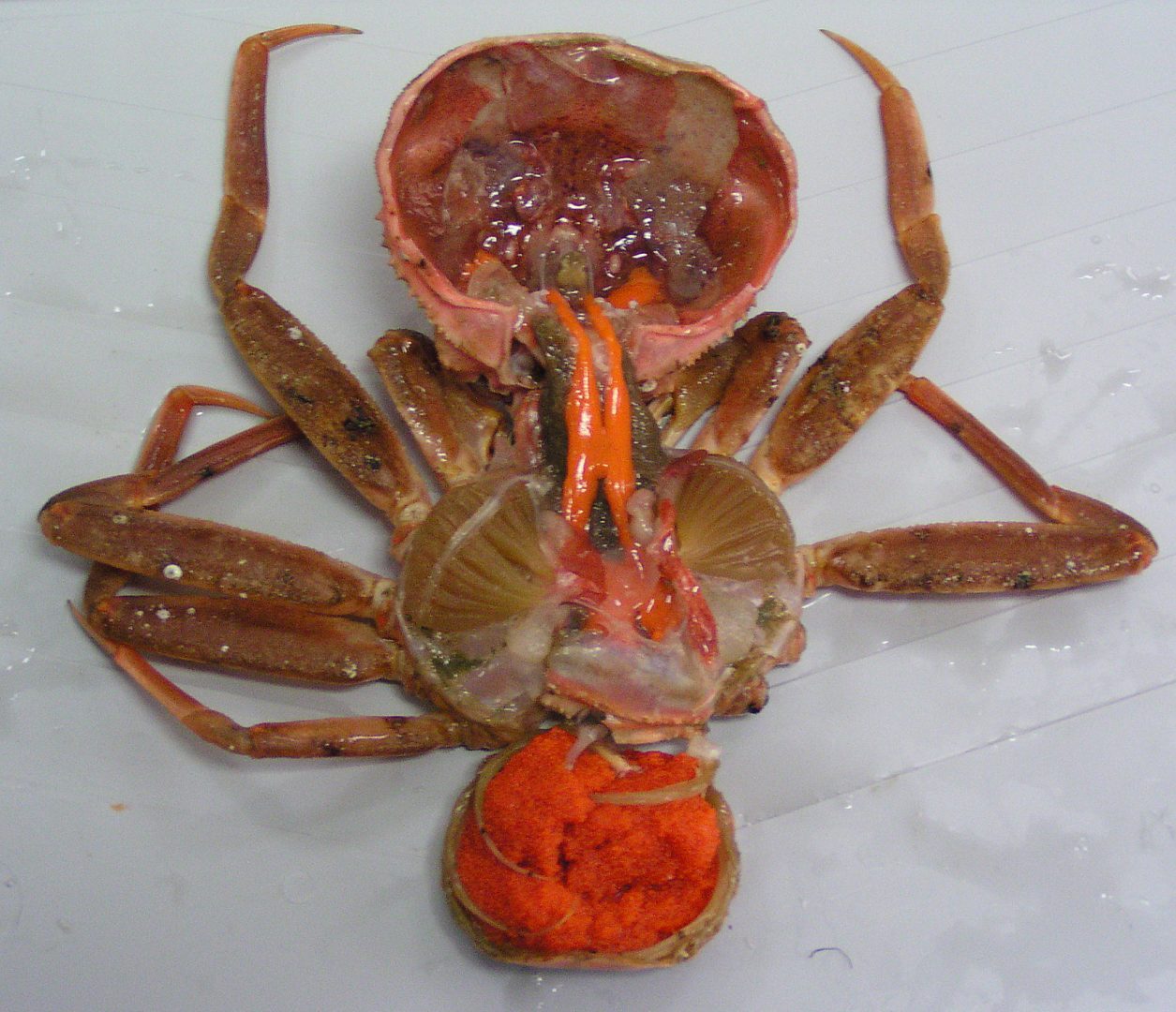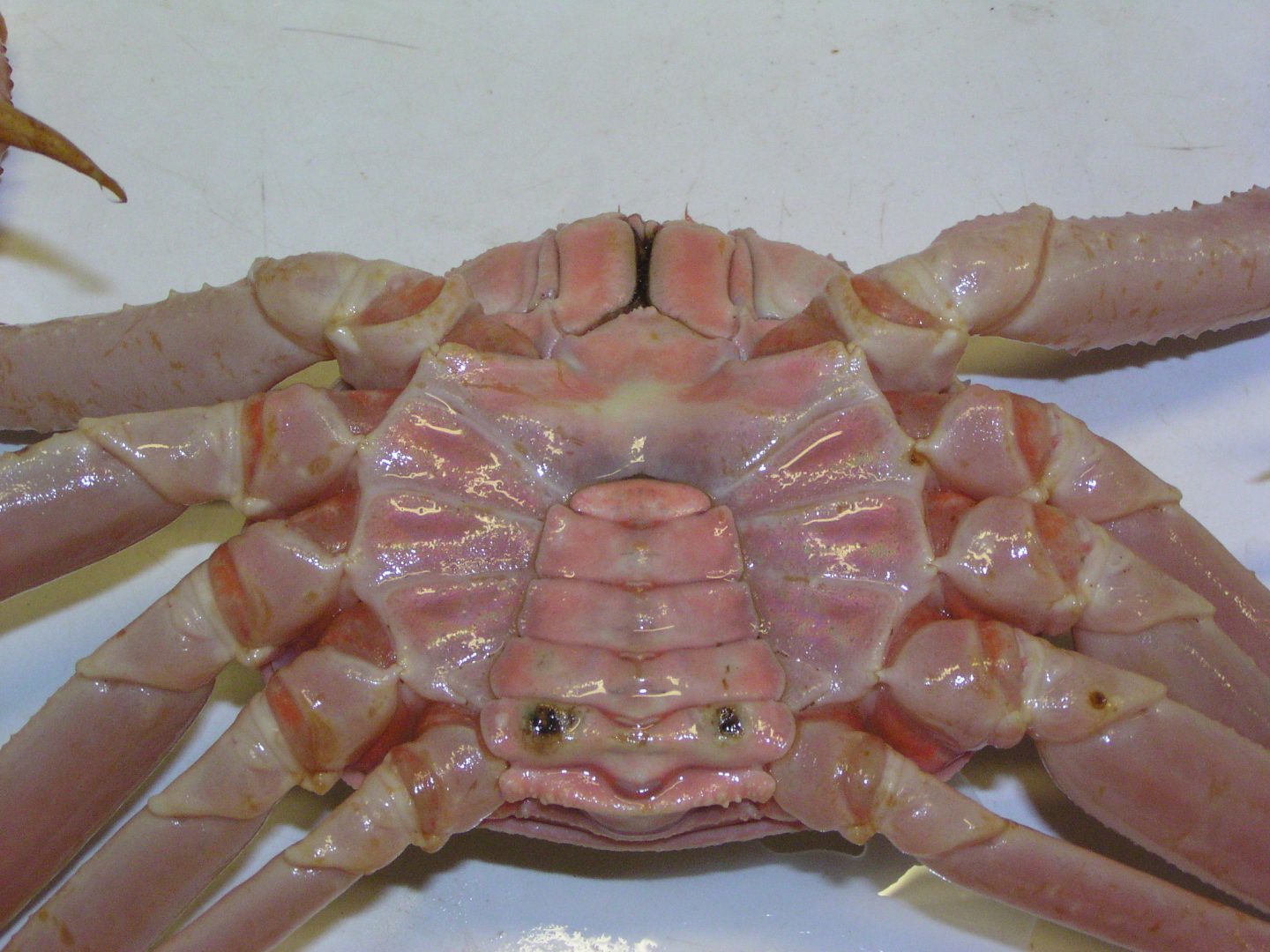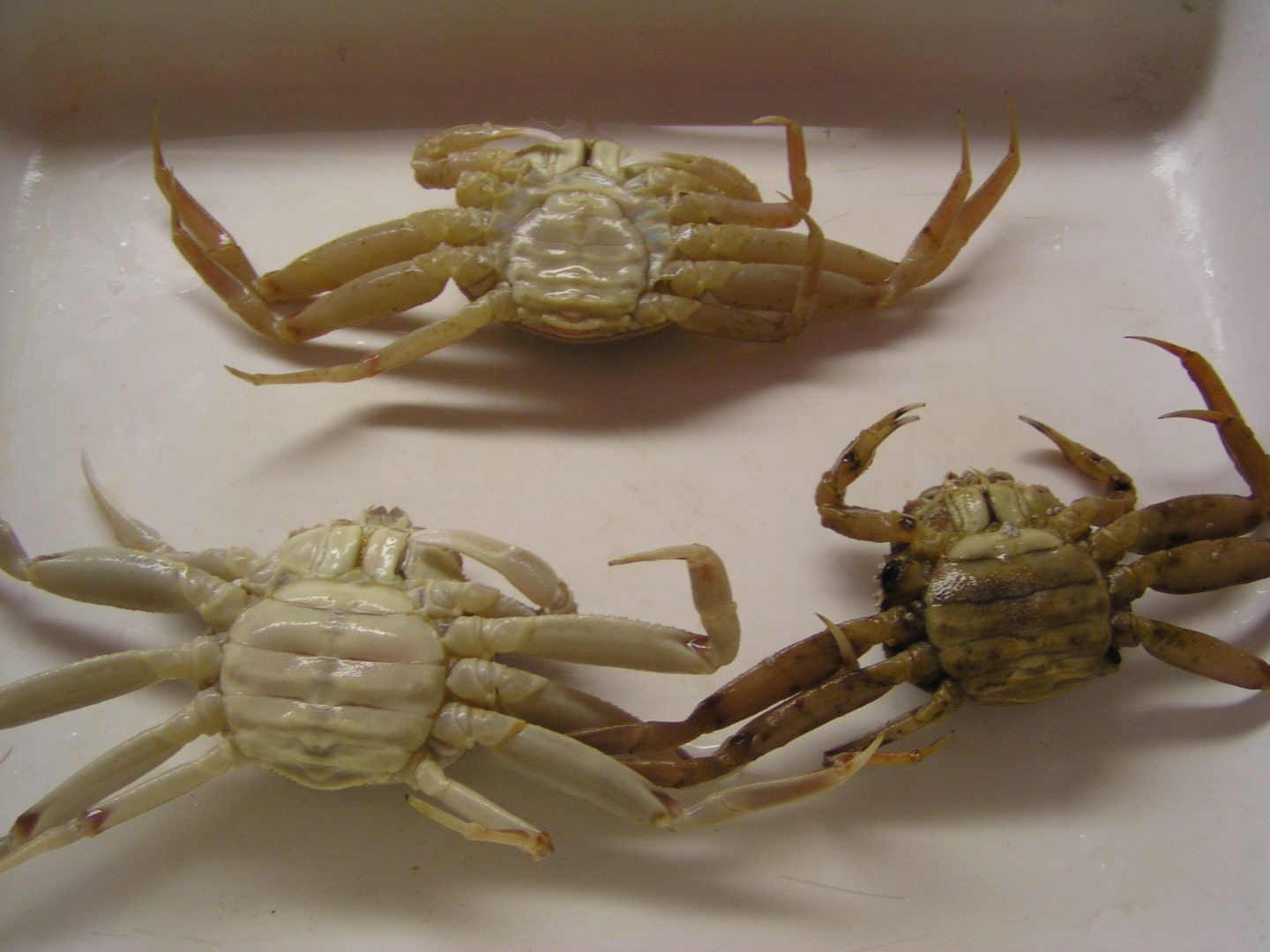Snow crabs
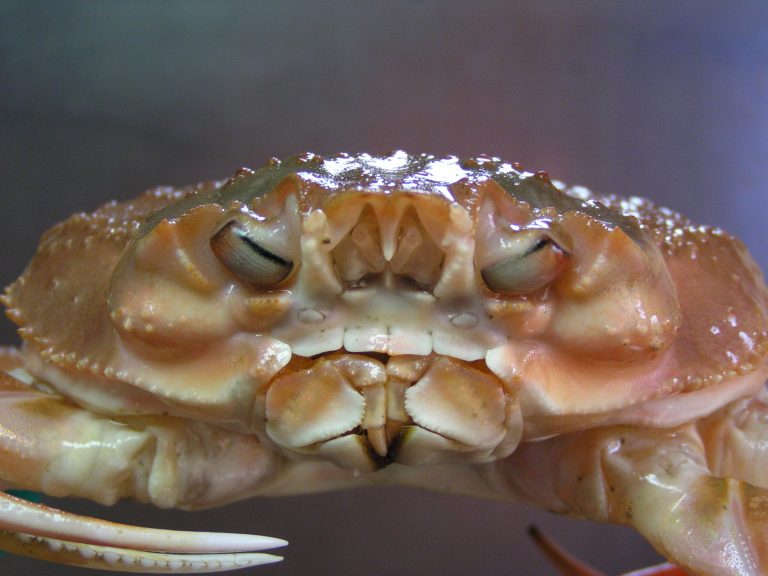
A male snow crab. Photo: AnnDorte Burmeister
Distribution
The large Greenlandic crab, Chionoecetes opilio, also called a snow crab is widespread in the Pacific Ocean from Japan to the Bering Strait, in the Northwest Atlantic and along Greenland’s west coast. No crabs of this species have been found east of Cape Farewell. The crab lives in areas with bottom temperatures of between -1 – 4 ° C. The depth at which the crab lives depend on several different factors, including the season and the size of the crab. Experience from the biological studies shows that the small crabs and females in some places live primarily in the lower water and the large males live at greater depths. Elsewhere, both small and large crabs live at the same depth. The crabs live on several different types of bottom, both soft bottom with clay or sand, stone / sand bottom and stone bottom.
Reproduction
The crab’s mate at the end of the winter period or early spring. The female crab stores the fertilized eggs under the hind body from 1 to 2 years, depending on the temperature of the water. In Disko Bay, the eggs hatch after approx. 1 year, while, in the cold fjords at Sisimiut, it takes up to 2 years. Every 7.-9. years, the crab population has natural fluctuations, so that there are 3-4 years of poor recruitment and 3-4 years of good recruitment to the population.
Click on the pictures to enlarge them.
- Cut female crab. There can be between 20-150,000 eggs depending on the size of the female crab. Photo: AnnDorte Burmeister.
- You can see that it is a male crab on the square hind body. Photo: AnnDorte Burmeister.
- The hind bodies of the females are round. The picture shows 3 stages in sexual maturation. At the top, not sexually mature female. Left, first time spawning female. Right, old female with clear mating marks on the legs. Photo: AnnDorte Burmeister.
Three larval stages
When the eggs hatch in the spring, the larvae go through two stages while living freely in the water masses. These planktonic larval stages are called “zoëa 1” and “zoëa 2” and they last for a period of between three to four months. During that period, the crawler larvae can be transported over long distances by wind and ocean currents.
The optimal habitat for the larvae is, of course, areas with high concentrations of food, which ensures them a greater chance of survival. This also ensures recruitment to the fishable stock. However, a large proportion of the larvae die before they become adults, primarily because they are food for other animals, such as large water fleas, crustaceans, and fish.
In early autumn, around September-October, the third larval stage, called the “megalops stage”, begins. At this stage, the crabs seek out the bottom, where they live for the rest of their lives. It takes at least 8-9 years from the time the crabs hatch before they are so large that they are part of the commercial fishery.
Soft shell crabs
The crabs must change shells in order to grow. Right after the shell change, the shell is too large and the crab “fills” the cavity between body and shell out with water. As the crab grows, the water is squeezed out and a new shell change is necessary for it to get bigger. Crabs change shells until they are approx. 8-9 years.
In the period around the shell change, the crab’s shields are very soft, making them vulnerable to predators. Most crabs change in the period from late March until August and some fewer changes in the autumn months, October, and November. Greenland Institute of Natural Resources’ studies show that fishing during the summer period can expect to catch 70-80% of soft and freshly peeled crabs. Due to the high-water content and low meat content, the soft crabs are not commercially interesting. They are released again, but most soft crabs do not survive re-release.
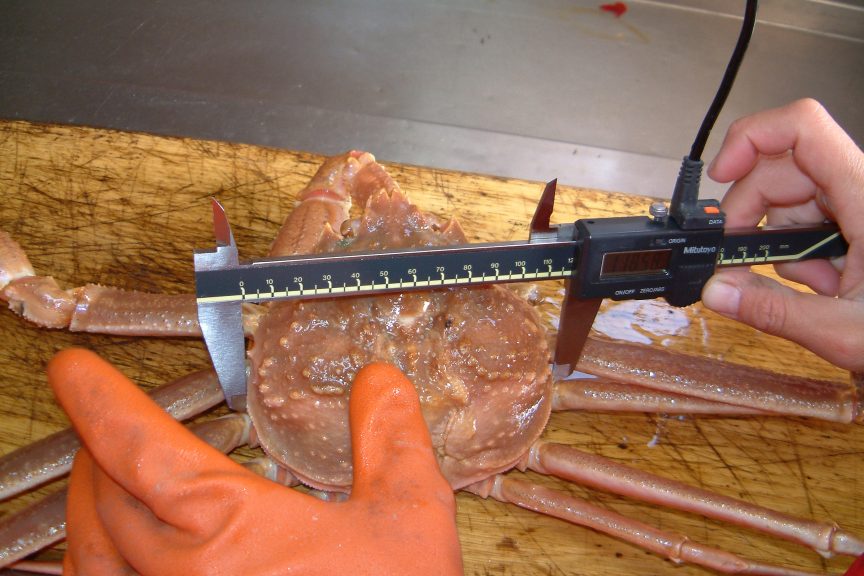
The shell size tells i.e., how old is the crab. Photo: Rikke Frandsen.
It takes 3 – 6 months before the shell is hardened and it can take up to 18 months before the crab has filled the cavity in the legs with meat. How often the crabs should change depends on many factors. The younger crabs change once a year, whereas it can take up to 2 years between the shell changes in the older and larger crabs. In both male and female crabs, growth stops after the terminal (last) shell change. At the terminal shell change, the crabs become fully sexually mature. However, some of the males are partially sexually mature before the terminal shell change. The male crabs have a shield width of between 58 and 165 mm at the last shell change, while the females have a shield width of between 50 and 100 mm.
The crabs do not live much longer than 5 years after the last (terminal) shell change, and already at the fourth year after the last shell change, a breakdown of the crab begins. The older crabs are not as active as before. If the aging process, the time it takes to harden the shield and increase the meat content after the shell change are considered, male crabs of commercial interest will be available for commercial fishing until 4-5 years after the terminal shell change.
Every 7.-9. years, the crab population has natural fluctuations, so that there are 3-4 years of poor recruitment and 3-4 years of good recruitment to the population.
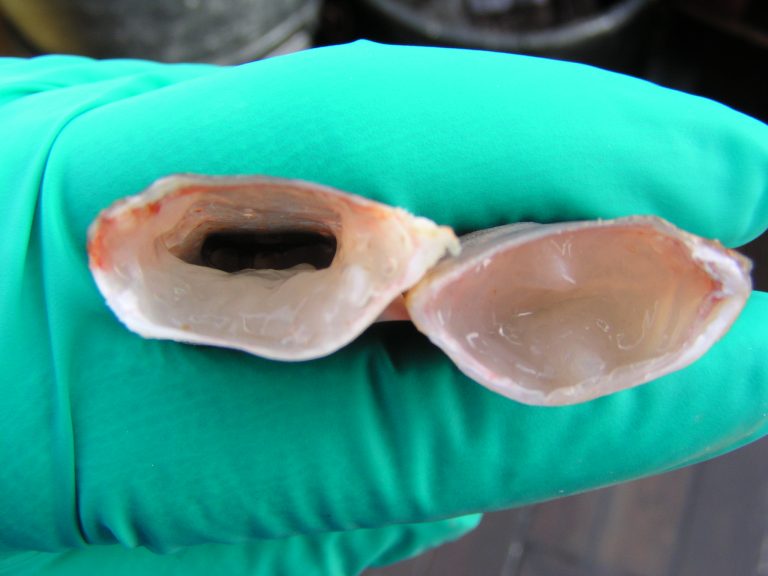
The difference between the amount of meat in the freshly peeled and the finished crab is large. Photo: AnnDorte Burmeister.
Food
The crabs eat crustaceans, mussels, snake stars, worms, snails, sea urchins, polyp animals and smaller crabs. In stages 1 and 2, however, the diet consists primarily of plankton, such as diatoms and zooplankton. The crabs themselves are food for fish, including cod and catfish.

